We are jumping in. Feet first on an essential chocolate product – cocoa!!!
What is Cocoa?
First, what is cocoa?? Cocoa begins as a bean that grows in pods from a cacao tree. The bean is fermented, roasted, and dried to develop a rich and earthy flavor. Then, the bean is ground and pressed, which makes pure, unsweetened chocolate, also known as chocolate liquor. From there, the chocolate liquor can be used for baking, made into other types of chocolate, or further processed. During processing, the fat is separated from the cocoa solids which leaves you with cocoa butter (fat) and cocoa powder (cocoa solids).
Cocoa powder is the core of chocolate flavor. Without any sugar, fat, or milk added to it, the true chocolate essence can be experienced. But there are different types of cocoa powder with different fat percentages. And knowing which type of cocoa powder is best for certain applications can help you make the most of that chocolate flavor.
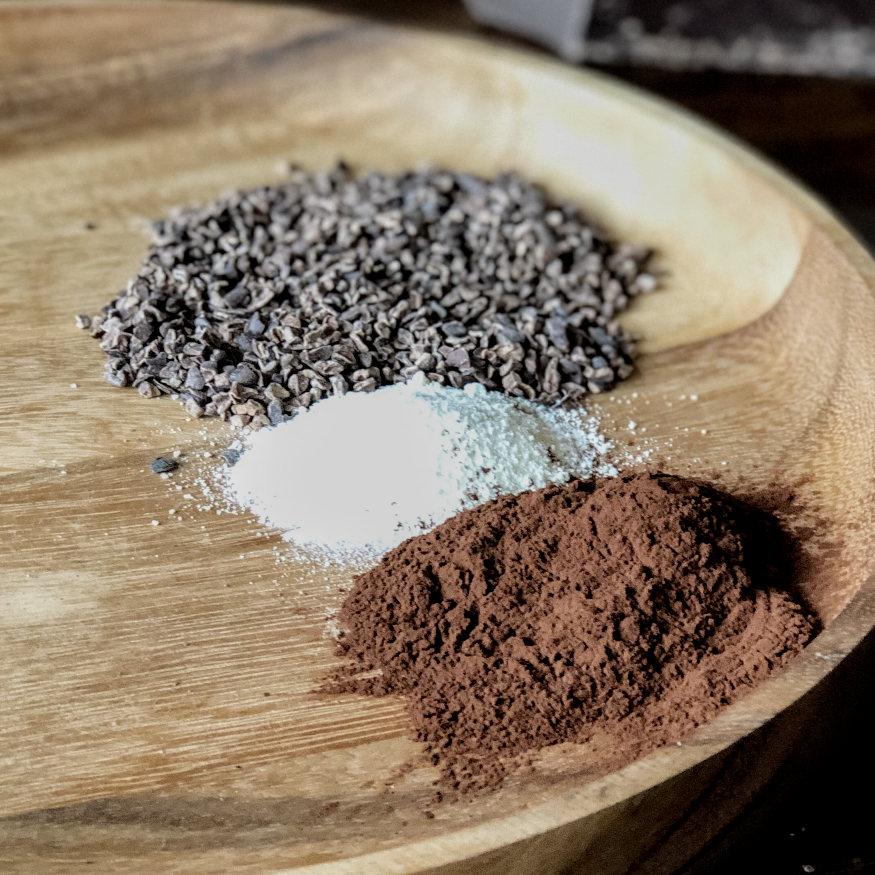
Cocoa Varieties
Now, knowing that the cocoa powder comes from the bean, the source of the bean makes alll the difference in the taste of the cocoa powder! Good chocolate companies make cocoa from good cocoa beans and you can definitely taste the difference.
Another contributing factor is the fat content. When the cocoa solids are separated, a percentage of cocoa butter remains in the cocoa. The FDA requires at least 10% cocoa butter to be classified as cocoa powder, yet the amount of cocoa butter varies between 10-25%. Why? Well, cocoa butter is expensive, so companies worried about making an extra buck will squeeze out as much cocoa butter as possible to sell as a separate product. This ends up compromising the flavor and texture of the cocoa powder. The higher the cocoa butter content, the smoother, richer, and creamier your resulting product will be!
The final contribution to the cocoa powder is the way in which the cocoa is processed. The two common types of cocoa you will encounter are natural and Dutch-processed.
Natural Cocoa
Natural Cocoa is ground cocoa powder in its pure form. It is naturally acidic which affects the taste and performance of the cocoa. Natural cocoa undergoes no further processing to remedy the acidic nature, which leaves the cocoa a light and chalky brown color. The taste is often described as “tinny,” but it is also a very classic chocolate flavor! Think 90’s cake! That is natural cocoa!
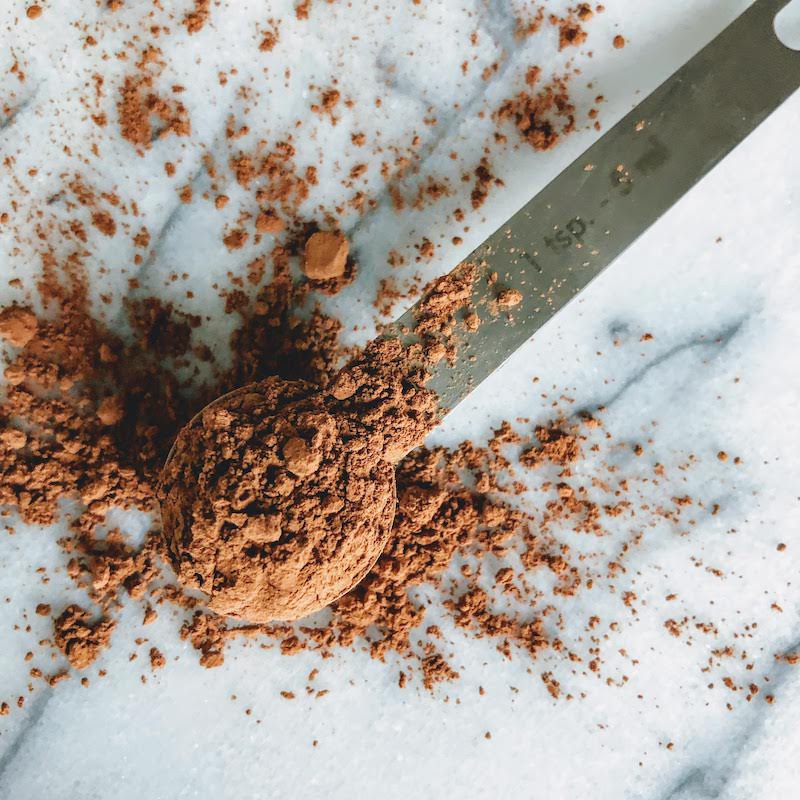
There is generally a lower fat content in natural cocoa, meaning there is a higher percentage of starch, which can leave baked goods dry and chalky. But you can find high-quality natural cocoa powders. These are cocoas made with high-quality beans. They will also have a higher fat content – look for a cocoa with higher than 20% fat.
Dutch-Processed Cocoa
Another type of cocoa you will encounter is a Dutch-Processed Cocoa. This product is the result of further processing natural cocoa powder. Naturally acidic cocoa powder is processed with an alkalizing agent, which reduces the acidic nature and mellows the original flavor of natural cocoa. Dutch-Processed Cocoa is darker in color and richer in flavor. The taste can often be described as “earthy.”
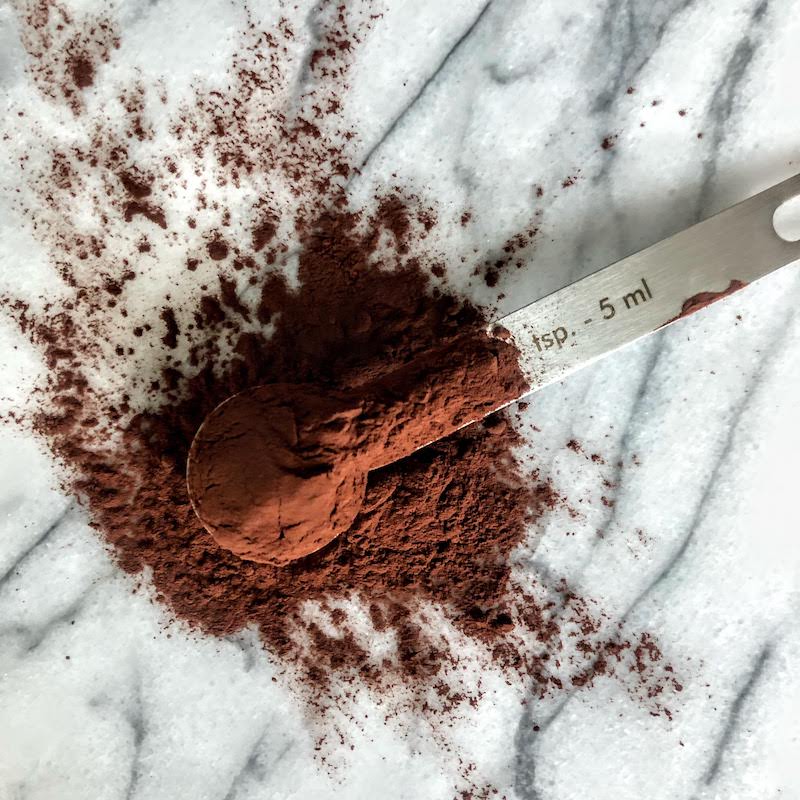
Generally speaking, Dutch-Processed Cocoas are made with higher quality beans, while also preserving the higher fat content, making them more desirable for baking and cooking. But watch carefully! Manufacturers are smart and have started to make dutch-processed cocoas with compromised standards. So, look for the fat content (20% or higher) and stick with reputable brands for the best results.
Black Cocoa
A third type of cocoa is Black Cocoa. This Dutch-processed cocoa is alkalized even more to remove almost all the acid from the powder. The result is a dark brown, almost black powder.
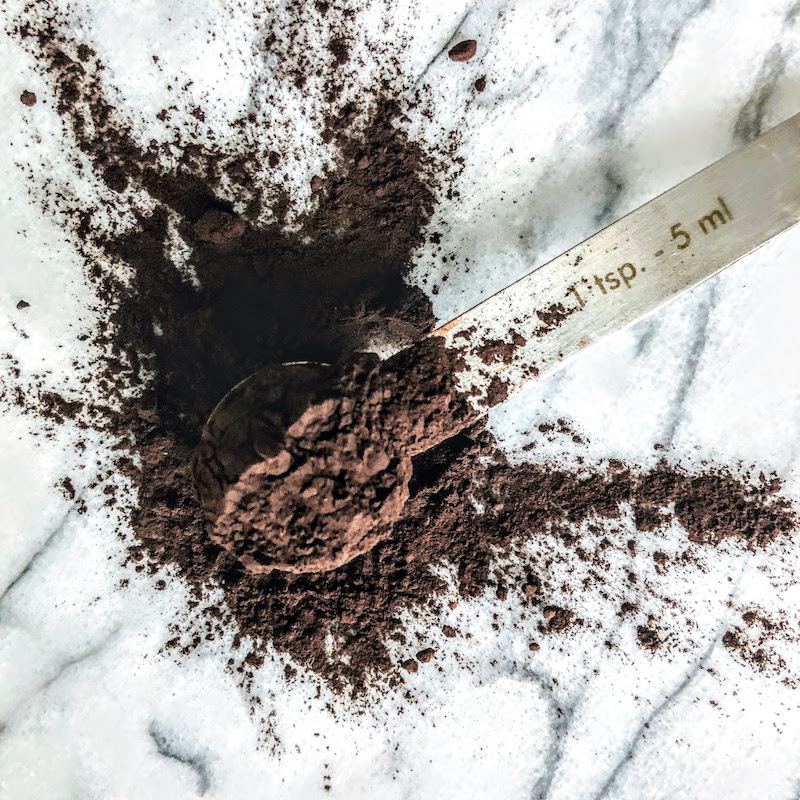
Black cocoa is used to make Oreos! Their iconic taste and color comes from black cocoa! Black cocoa is popular for Halloween cakes, cookies, and frostings, because it is easier to achieve black goodies without using an entire bottle of black food coloring.
Are Cocoa Powders Interchangeable???
Yes. And No! If you are NOT baking with the cocoa, you can use any type of cocoa you like. So, pudding, frosting, sauce, mousse, etc… use any type of cocoa that gives you the best flavor.
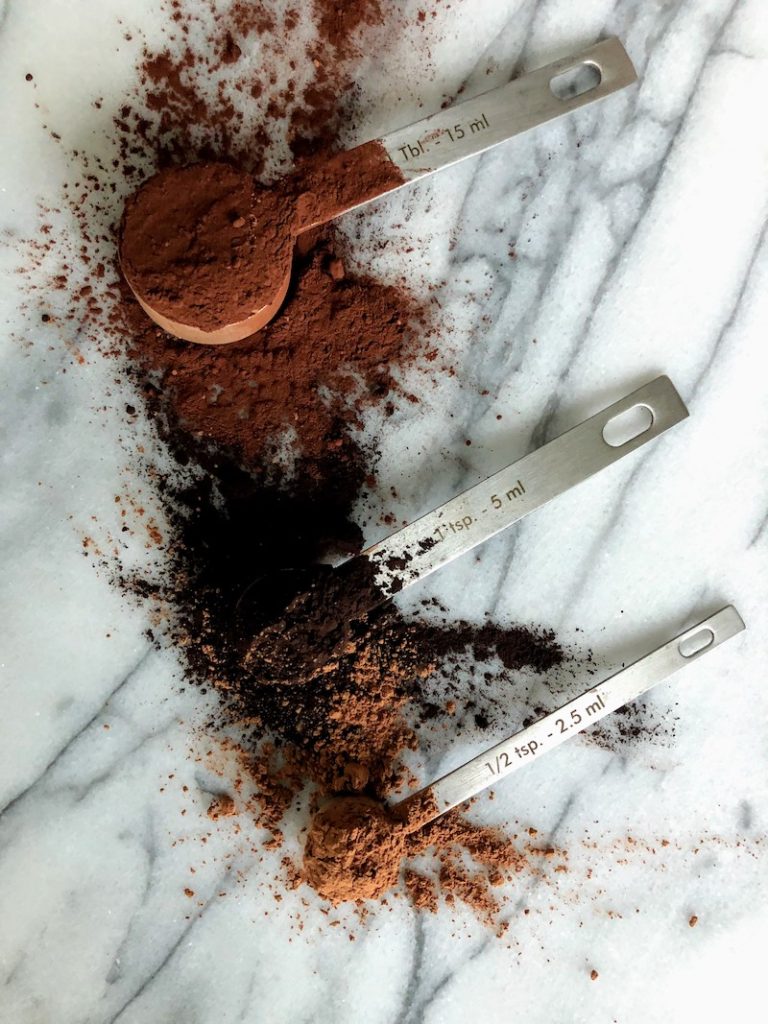
But, when it comes to baking, you need to take caution. Baking is a science. And the success of the recipe is dependent on the exact ingredients being present. So, if your recipe calls for a Natural Cocoa, it is depending on the acidic quality of the cocoa for the recipe to help act as a leavening agent for drool-worthy results. If you use a Dutch-processed cocoa in its place, the alkaline nature of the cocoa may not activate properly, leaving you with a dense mess of a cake, cookie, brownie, etc. Not good.
Which Cocoa Should I Use??
It can be tempting to use whatever cocoa you have in your cupboard. But! Take caution. If you’ve never made the recipe – use the exact type of cocoa that is called for!
If you have made a recipe a few times before and are looking to experiment, here are a couple rules to keep in mind:
- Not baking: use any type of cocoa
- Not baking with leavening agents: use any type of cocoa
- Baking with baking soda: use Natural Cocoa
- Baking with baking powder: use Dutch-Processed Cocoa or Dark Cocoa
- Baking with baking soda + an acidic ingredient (ie. buttermilk): use any type of cocoa
- Recipe calls for less than 1/2 cup cocoa: use any type of cocoa
Hopefully that helps guide your cocoa-buying decisions! If you’re still trying to decide which type to buy, follow your tastebuds. First, pick a brand of chocolate you like! Callebaut & Guittard make delicious chocolates. Hence, they also make delicious cocoa!! So, pick a brand you love. Then, decide if you want a classic, chocolate flavor (natural!) or a rich, fudge-like, and earthy flavor (dutch-processed). And don’t be afraid to experiment! Try a few kinds – you might surprise your taste buds.
| Natural | Dutch Processed | Dark Black | |
| PROCESS | pure, ground cocoa solids | treated with an alkalizing process | heavily alkalized |
| COLOR | light brown, chalky | deep red, earthy | dark brown or black |
| PH LEVEL | high | neutral | low |
| BAKING LEAVENER | baking soda | baking powder | baking powder |
| FLAVOR | sweet, classic chocolate flavor | rich, fudgy, earthy flavor | deep, bitter dark flavor |
Cocoa Taste-Off
We love a good taste test at Orson Gygi. (Remember vanilla??) So, we made six batches of brownies using six types of cocoa. Same recipe. Same pan. Same cooking time. Same everything! Except the cocoa.
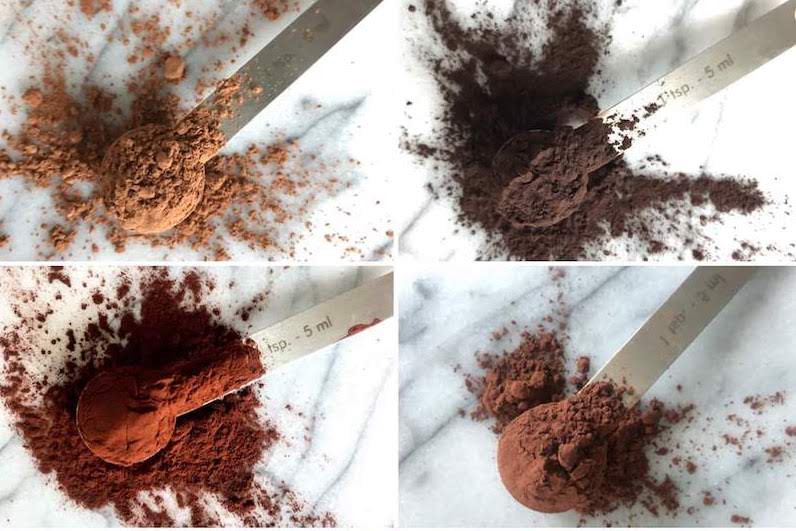
Then we invited our customers to try the brownies and rank their top three favorites. We tallied the votes and calculated the winners.
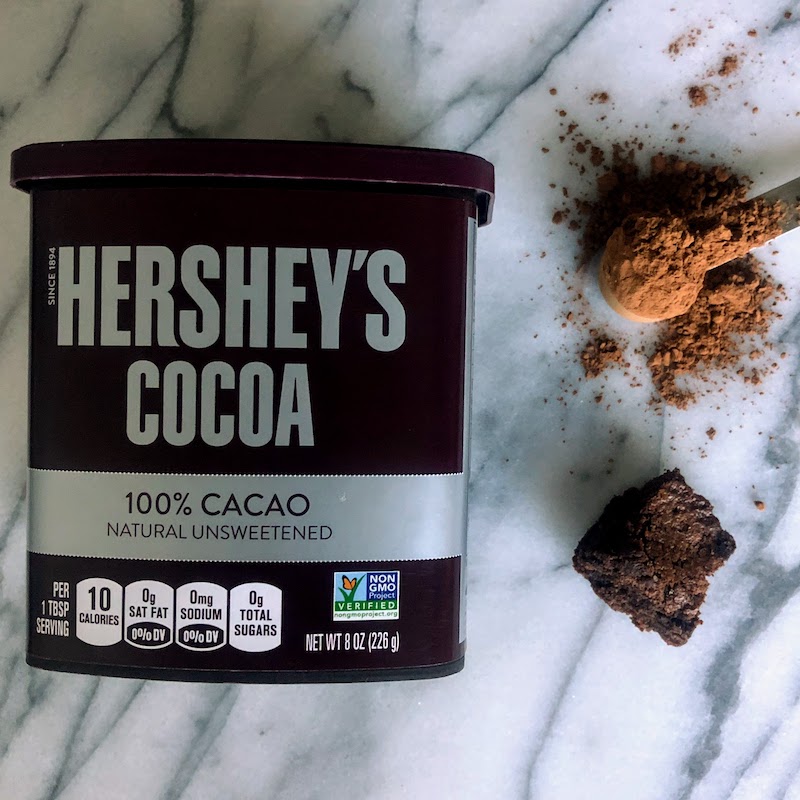
24%
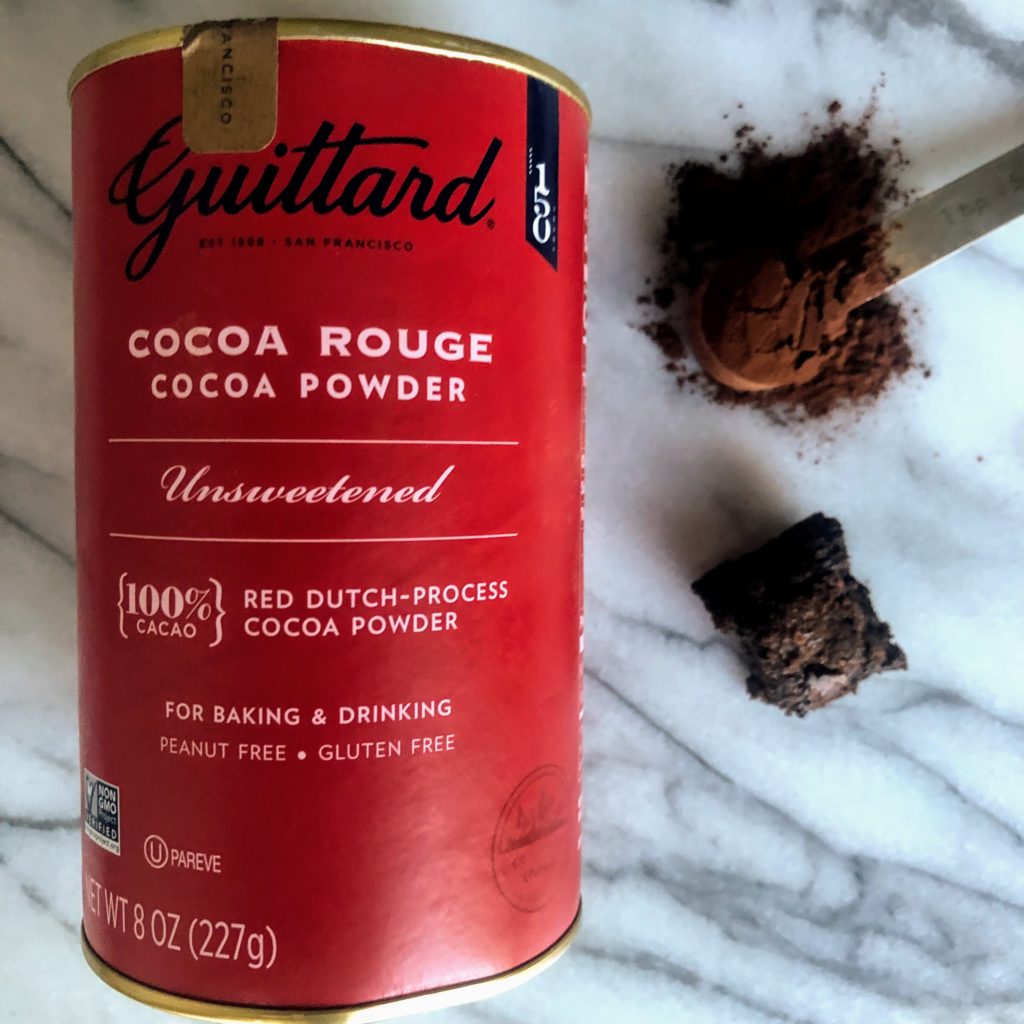
23%
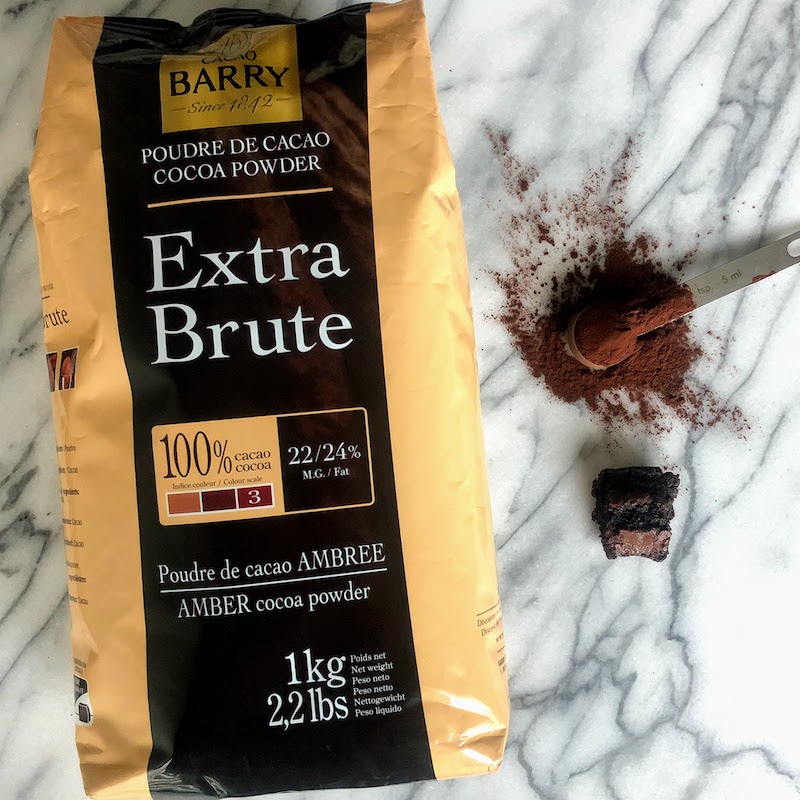
17%
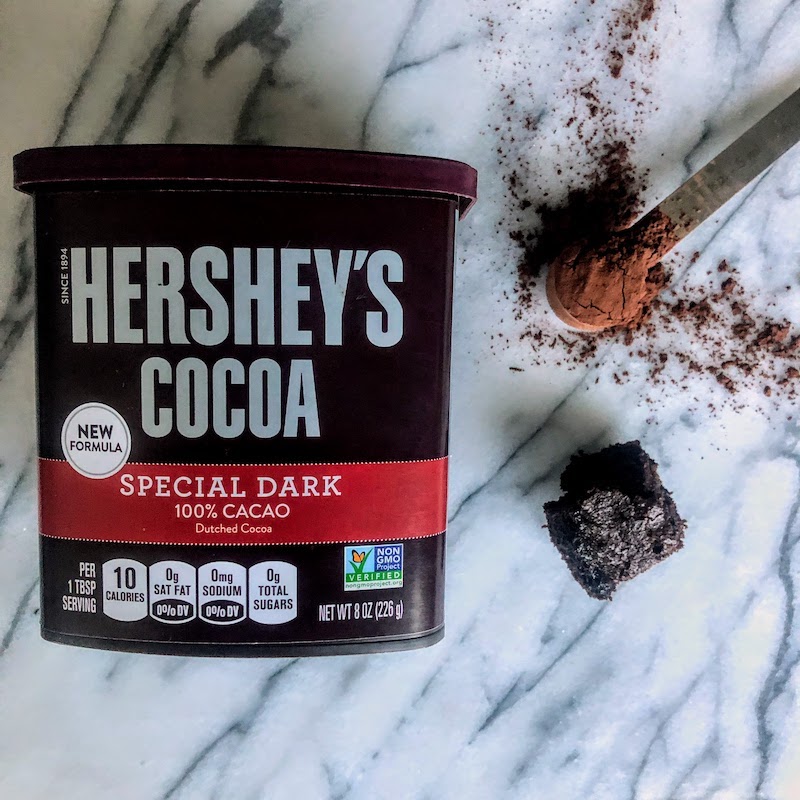
17%
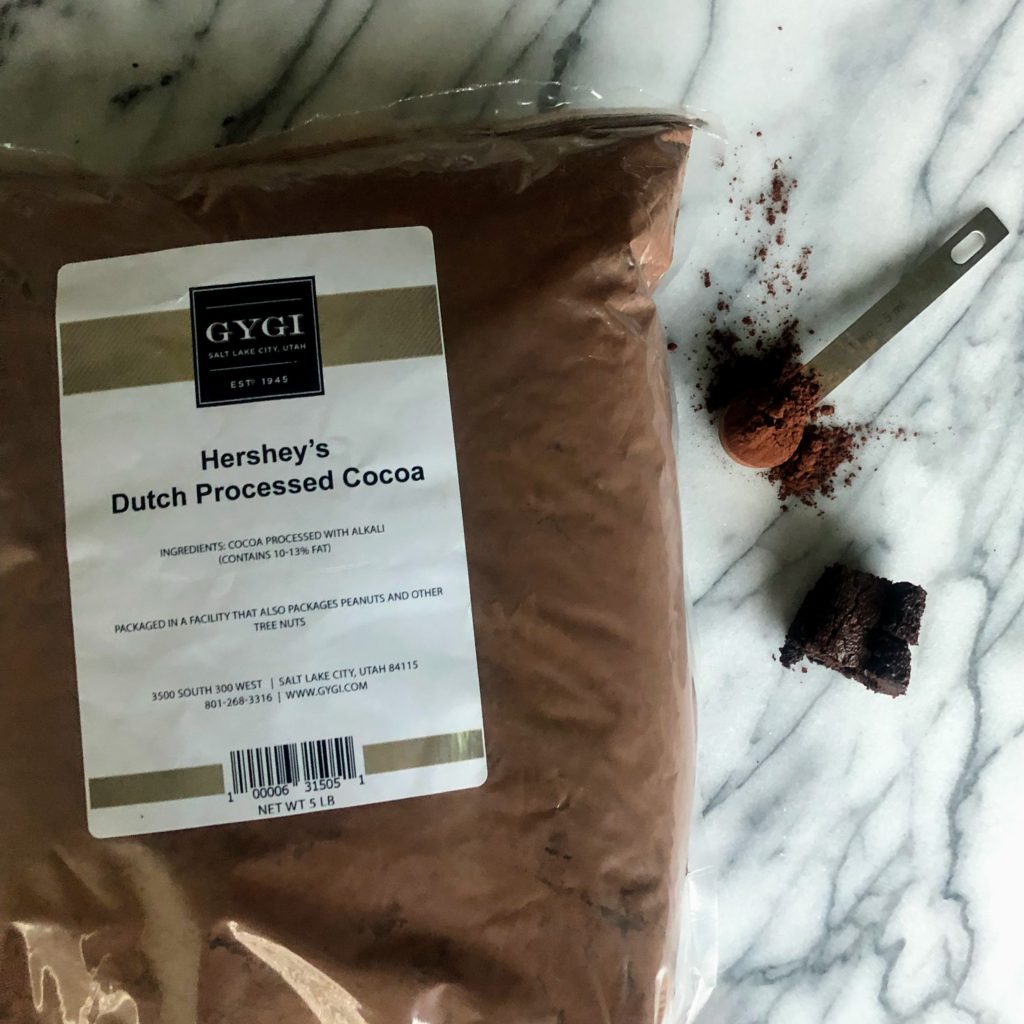
10%
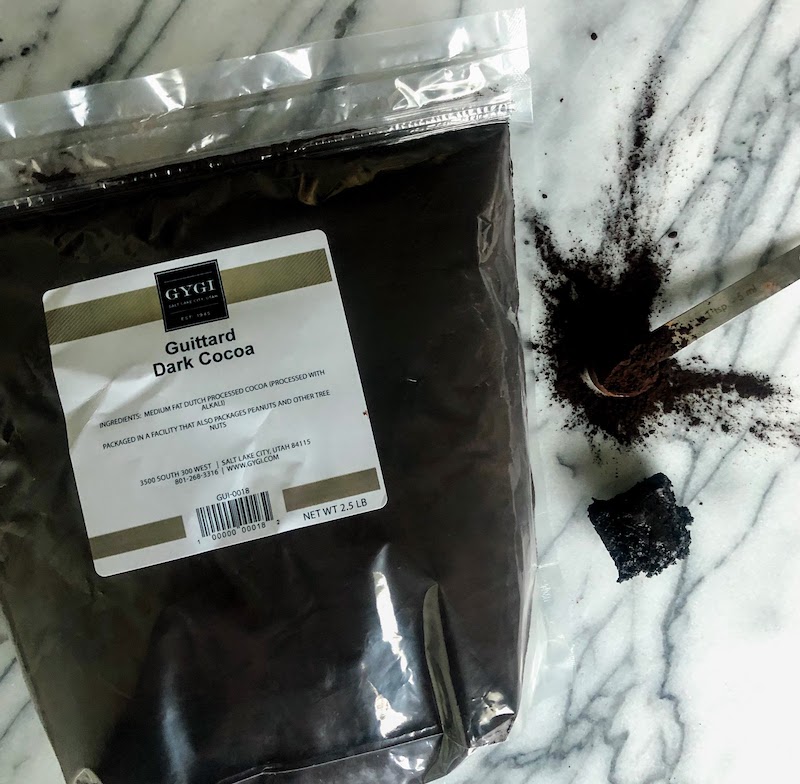
9%
Taste-Off Observations
First, we were initially shocked by the winner of the taste-off. Hershey’s Natural Cocoa! But, as we sat with it and really analyzed the situation, we understood why this cocoa powder had an advantage. Hershey’s Natural Cocoa was preferred due to its classic chocolate flavor. If you were raised on Hershey’s Cocoa, you are accustomed to Hershey’s Cocoa! This brownie was classically sweet and chocolatey, which is why it won.
Now, second place was NOT far behind – only 1 percent. Just four votes. This brownie was made with Guittard Cocoa Rouge, which is a Dutch-Processed Cocoa. This brownie was delicious. It was also the first dutch-processed brownie in the lineup. As a result, it was the most noticeably different, because most tasters consumed it after the natural cocoa brownie.
The next two cocoas were soooo close in this taste-off! Callebaut Extra Brute (my personal favorite!) & Hershey’s Special Dark tied with 17% of the votes. Crazy.
But even crazier – after a little research and discussion with the Hershey’s Company, we discovered that Hershey’s Special Dark Cocoa and Hershey’s Dutch-Processed Cocoa ARE THE SAME COCOA. Haha. The first is packaged for home consumers, while the second is packaged for restaurant/bakery use. We repackage their enormous 50 pound bags, passing a savings on to you! But, now you know, we know, and everyone knows – they are the same thing.
Now, why were the Dutch-Processed cocoa powders so neck-in-neck?? Well, they were all delicious! They are all good cocoa products, so they all made great brownies. Also, due to the amount of other ingredients in the brownie recipe (sugar, flour, butter, etc.) the subtle nuances in flavor were lost! They were all similarly rich, fudge-like, and earthy! Perhaps we should try this test again, but with pudding. Or frosting. Or another application that would let the chocolate flavors stand out.
Now for the last-place, Guittard Dark Cocoa! If it is true that we eat with our eyes, then this brownie began this contest with a disadvantage! Tasters were instantly turned off by its dark black color. Many of them assumed it would taste like bittersweet chocolate (it didn’t). It also looked under baked (it wasn’t). It did, however, taste different than a typical brownie. Many people loved it, just not the majority.
Conclusion
Okay. So, there is a lot of cocoa information. Possibly more info than you knew you needed!
Our hope is that it will guide your future cocoa use! We hope you’ll feel more confident next time you need to buy cocoa powder or when you try a new recipe. Hopefully you’ll try something new and fall in love with the products you’re using.

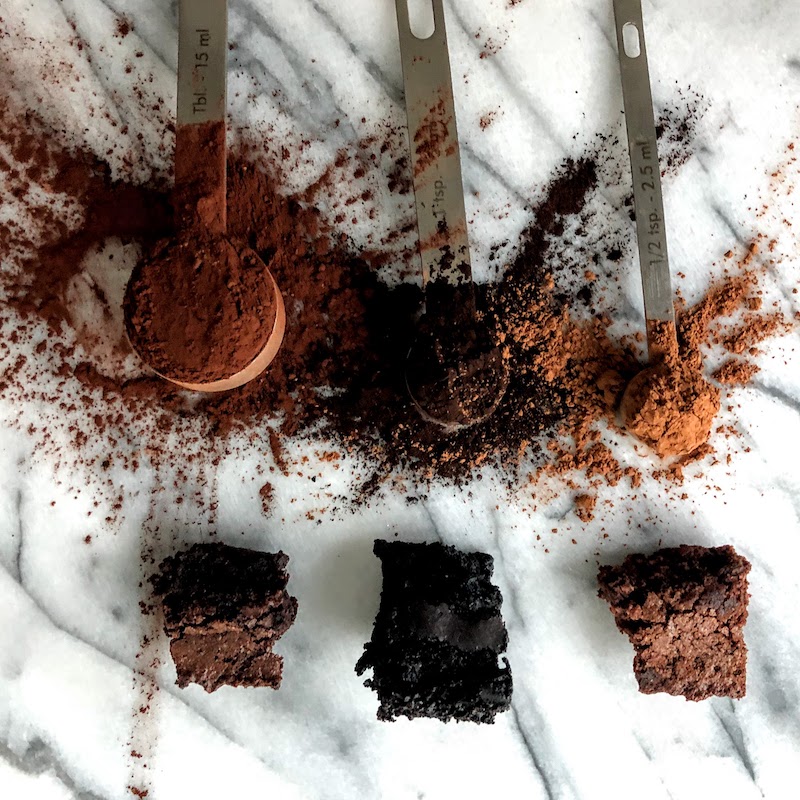
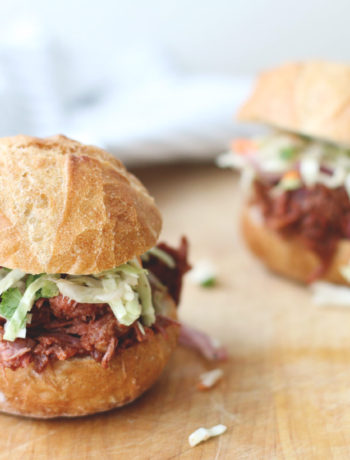
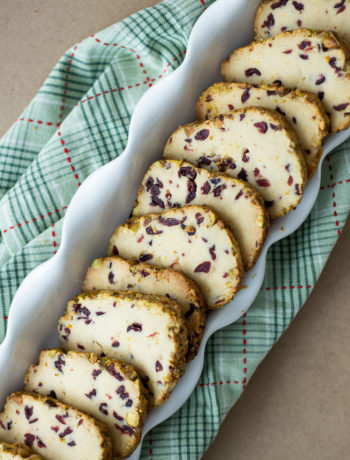
Linda
April 8, 2021 at 10:21 pmwhat gives each brand its own flavor?
connie
April 23, 2021 at 4:31 pmHi Linda! That’s a great question. Each brand sources their cocoa from different regions. The location in which the cocoa is grown changes the flavor of the cocoa. The difference is subtle, but when you taste it side by side it is different. Guess you’ll have to try all the flavors! That’s fun homework!
Stephanie
September 25, 2019 at 12:31 amSome really great information. Now if Hershey’s Special Dark Cocoa and Hershey’s Dutch-Processed Cocoa are The same Cocoa, then combined they account for 27% of the votes. Wouldn’t that actually put it in first place then?